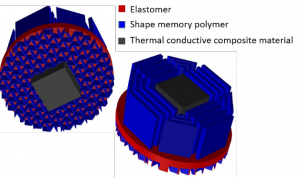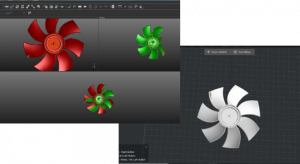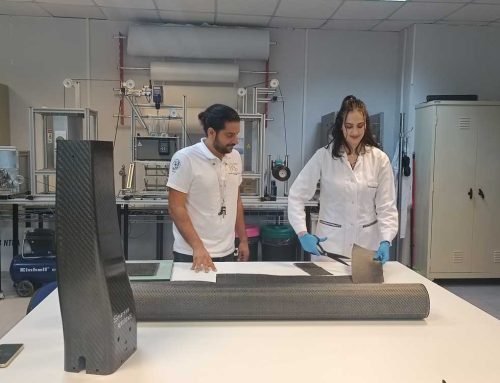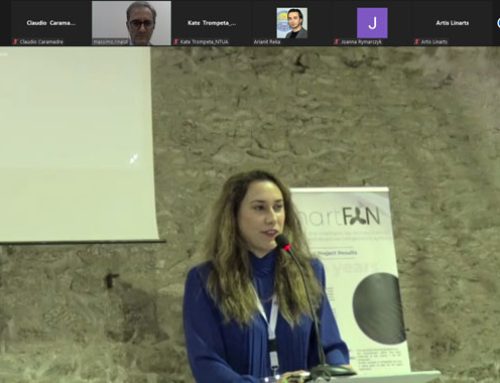Main Technical Achievements M24 | BIOG3D
Development of bioinspired 3D printed processor cooling system (BioG3D – New 3D printing technologies)
During the first 24 months of SMARTFAN, BioG3D has dealt with the design and development of the Heat sink of a bioinspired processor cooling system with improved overall effectiveness, through 3D printing. The targeted properties for the heat sink is the increase of the heat flux through its whole volume, the decrease of the operating noise and the decrease of the system’s weight. Towards this direction, structures that self-response by pre-programming their architecture were designed and composite filaments reinforced with carbon-based nanoparticles were employed. The design of the heat sink incorporates different polymeric materials, to attain the desired properties (Figure 1). Specifically, for the heat sink base a shape memory polymer (PETG) and an elastomer (TPU) were utilised to achieve self-morphing upon thermal stimuli. To ensure optimum control over the bending function, design parameters were optimised and auxetic patterns, were introduced in the infill geometry. Heat sink’s fins were also constructed from the shape memory polymer. Finally, the central part of the heat sink (depicted in black color) was fabricated by employing a thermal conductive composite filament (produced from CANOE), consisting from a polyamide matrix and reinforced with CNTs and Graphene nanoplates.
Moreover, an initial design of the processor cooling system fan was created by employing Reverse Engineering principles through 3D scanning of a commercial available unit (Figure 2). In the upcoming period, the design parameters of the heat sink’s architecture, such as fins dimensions and shape, curvature angle, size of each part and infill design, will be evaluated and optimised. Additionally, design of the fan will be modified to introduce self-morphing and optimum functionality.

Figure 1
Design of the Heat sink architecture.






Leave A Comment